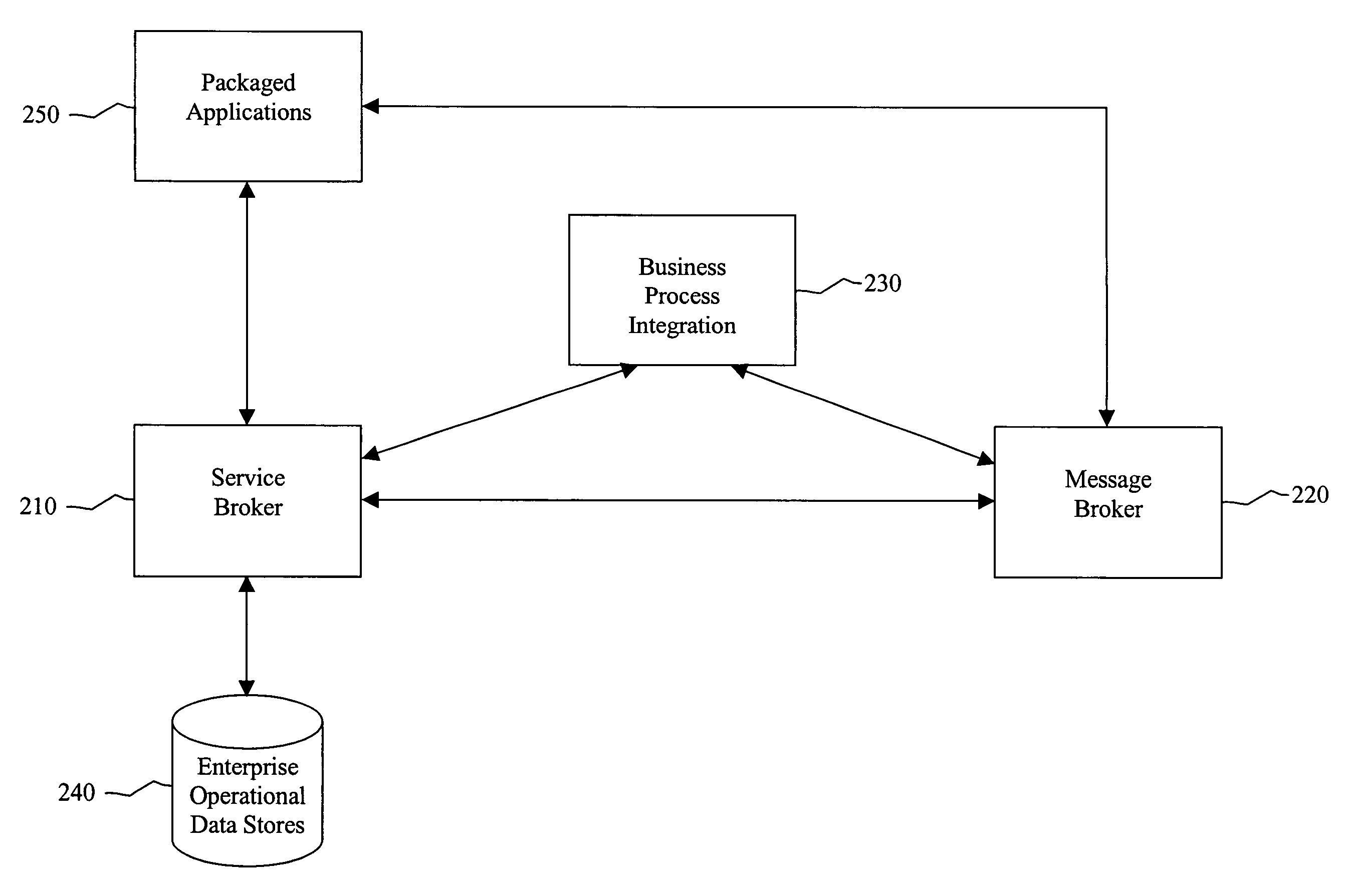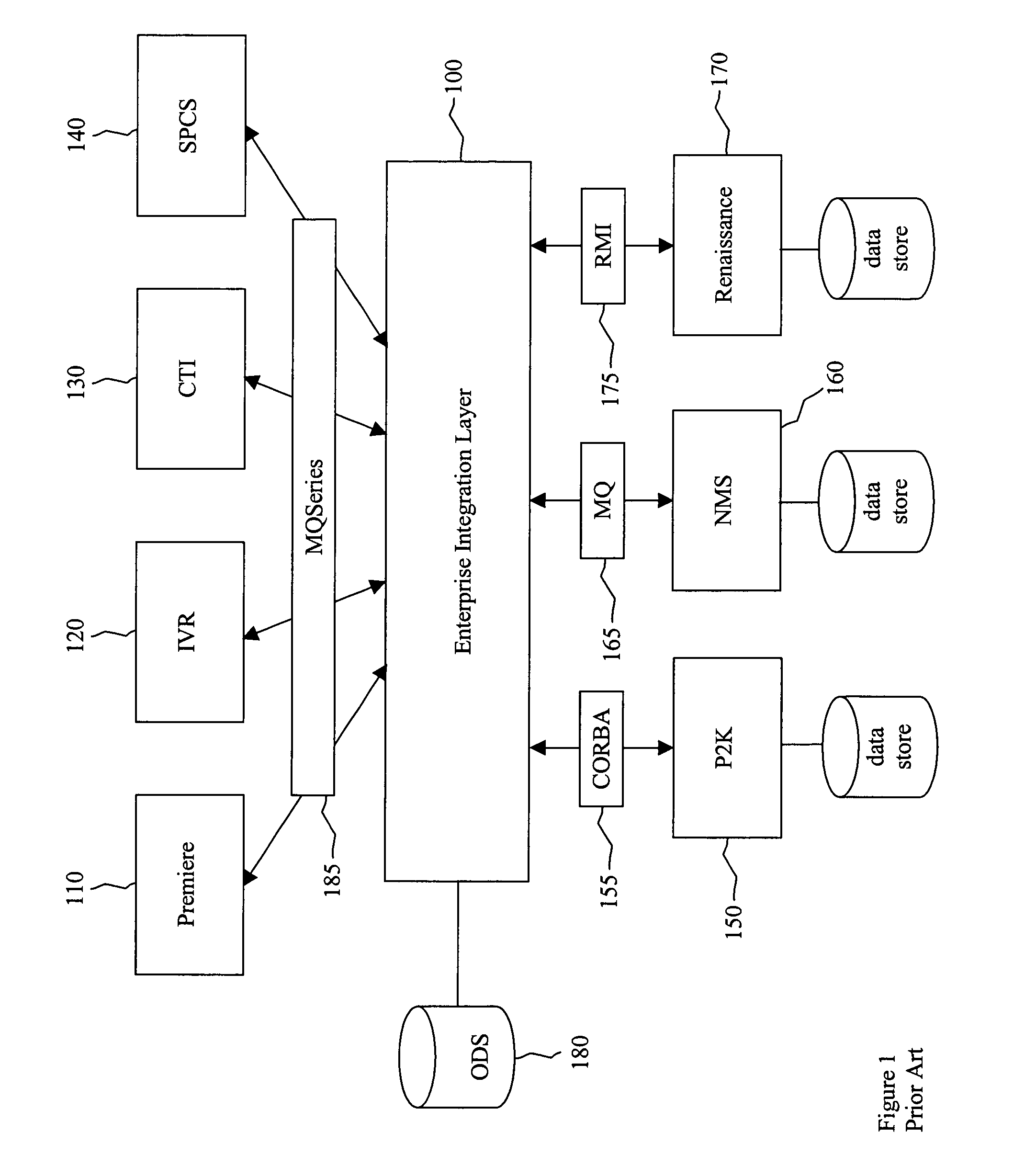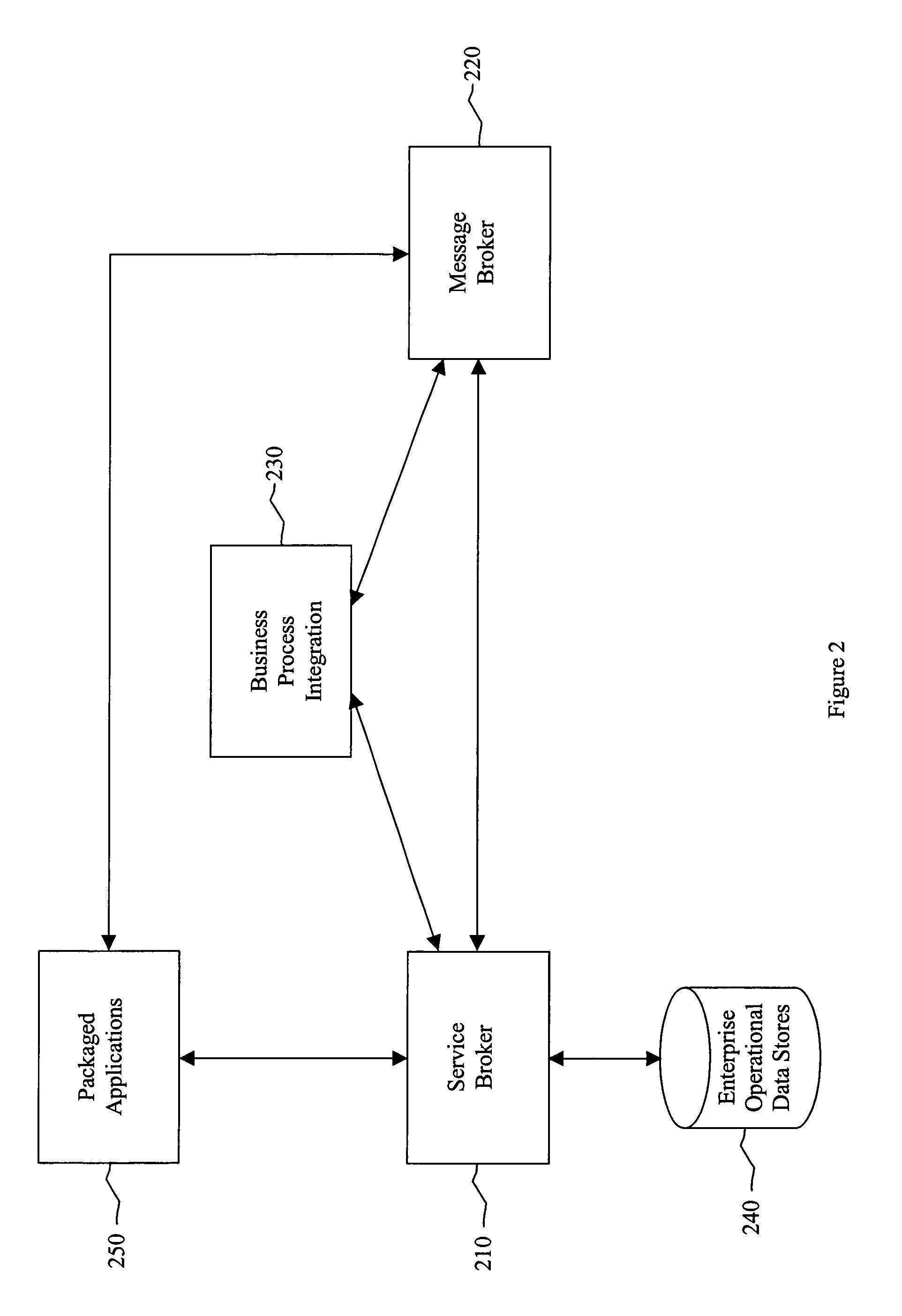Integration infrastructure
a technology of integration infrastructure and messaging server, applied in the field of communication among computing systems, can solve the problems of data messaging placing a heavy load on the message bus, message implementations often fail, and message servers can become bottlenecks between applications for messages,
- Summary
- Abstract
- Description
- Claims
- Application Information
AI Technical Summary
Benefits of technology
Problems solved by technology
Method used
Image
Examples
Embodiment Construction
[0035]A more efficient manner for distributing data and events to multiple applications is desired. In a target state, an enterprise integration layer such as that described above would become aware of business events rather than merely passing on data, and messages. This can be accomplished by integrating the enterprise integration layer with a business process integration engine that implements the core processes of the enterprise and feeds messages to the target systems. In this target state, back-office applications would typically need to be capable of generating or publishing business events. Middleware, such as the enterprise integration layer and the business process integration engine, would not necessarily be involved in business transactions. Applications that rely on batch loading would typically need to be capable of becoming online processes that are ready to consume events, that is, to subscribe to messages. Messaging-based data exchange would reduce the need for batc...
PUM
 Login to View More
Login to View More Abstract
Description
Claims
Application Information
 Login to View More
Login to View More - R&D
- Intellectual Property
- Life Sciences
- Materials
- Tech Scout
- Unparalleled Data Quality
- Higher Quality Content
- 60% Fewer Hallucinations
Browse by: Latest US Patents, China's latest patents, Technical Efficacy Thesaurus, Application Domain, Technology Topic, Popular Technical Reports.
© 2025 PatSnap. All rights reserved.Legal|Privacy policy|Modern Slavery Act Transparency Statement|Sitemap|About US| Contact US: help@patsnap.com



